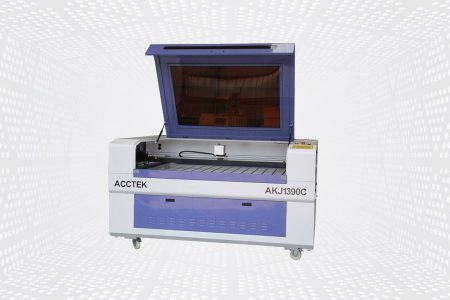Year Warranty
0
Orders
0
+
Type of Machine
0
+
AccTek CO2 Laser Marking Machine
The CO2 laser marking machine is a versatile and effective tool that can be used to mark and engrave a variety of materials, including wood, plastic, leather, glass and ceramics. Using a focused, high-intensity infrared beam, it can quickly and accurately engrave intricate patterns, text, logos and images onto material surfaces without any physical contact.
CO2 laser marking machines are an excellent choice for businesses that need to mark or engrave materials. With a high degree of customization, flexibility and speed, these machines help businesses increase productivity and efficiency while maintaining the highest standards of quality and precision. Furthermore, they are a cost-effective solution requiring little maintenance. Whether you want to mark your products with unique identifiers, logos or branding elements, or need to engrave intricate patterns and designs on a variety of materials, a CO2 laser marking machine could be the ideal solution for your needs.
CO2 laser marking machines are one of the most versatile and efficient methods of marking or engraving materials. It is widely used in manufacturing, advertising and design industries for its speed, precision and ease of use.

Play Video about Fully Enclosed CO2 Laser Marking Machine
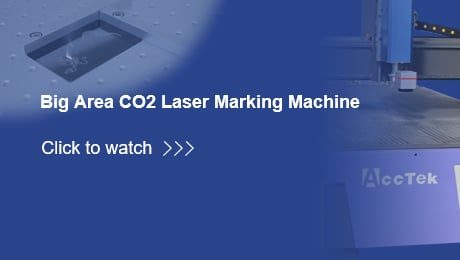
Play Video about Big Area CO2 Laser Marking Machine
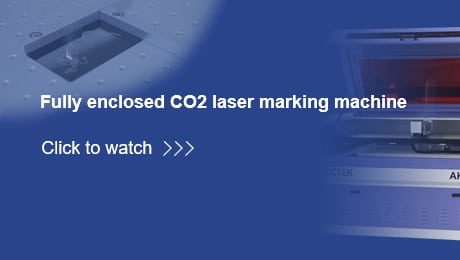
Play Video about Fully Enclosed CO2 Laser Marking Machine
Advantages of CO2 Laser Marking Machine

High-Precision Marking
High-Precision Marking
It can make precise, intricate marks on a variety of materials, and it can also adjust the laser beam to create marks with high resolution and accuracy, resulting in clearly readable marks.
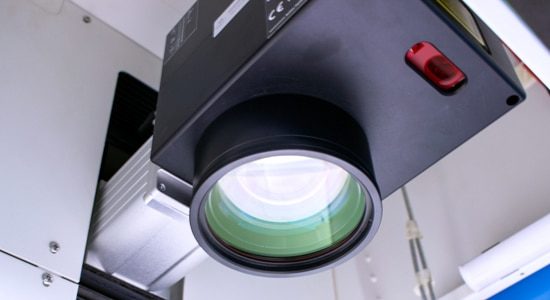
Wide Range of Materials
Wide Range of Materials
It can mark a wide range of materials, including organic materials such as wood and leather, as well as some plastics and glass, making it a versatile choice for a variety of marking applications.
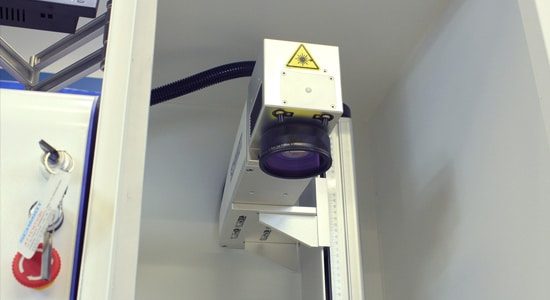
Non-Contact Marking
Non-Contact Marking
It uses a non-contact marking method, that is, there is no physical contact between the laser and the material being marked, which reduces the risk of material damage and ensures clean and precise marks.
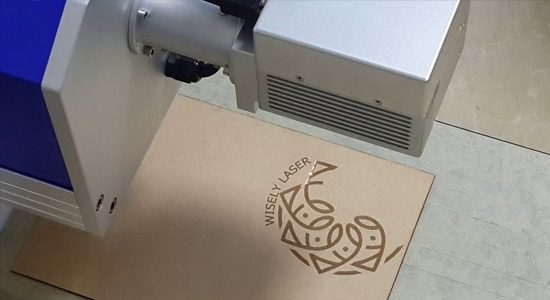
Fast Marking Speed
Fast Marking Speed
It can mark materials faster than other marking methods, reducing the time and cost required for the production process.

Low Maintenance
Low Maintenance
It requires very little maintenance and has a longer lifespan than other marking methods. Plus, it requires no ink or other consumables, reducing the need for ongoing maintenance and replacement costs.
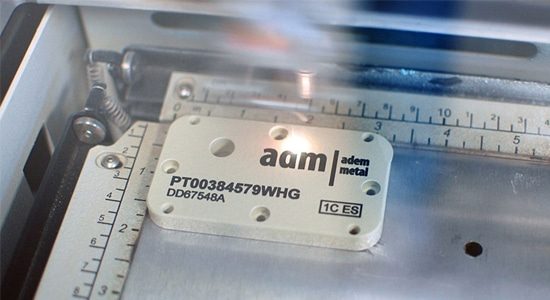
Ease of Use
Ease of Use
Designed to be user-friendly and easy to operate, it can be integrated with software and automation systems to streamline production processes and increase productivity.

Non-Contact Marking
Non-Contact Marking
It uses a non-contact marking method, that is, there is no physical contact between the laser and the material being marked, which reduces the risk of material damage and ensures clean and precise marks.

Ease of Use
Ease of Use
Designed to be user-friendly and easy to operate, it can be integrated with software and automation systems to streamline production processes and increase productivity.
Frequently Asked Questions
A CO2 laser marking machine is a device that uses a CO2 (carbon dioxide) laser to mark or engrave on various materials such as plastic, glass, leather, and wood. CO2 lasers use a gas mixture of carbon dioxide, nitrogen, and helium to produce a high-intensity laser beam that can vaporize the surface of the material it is pointed at. The laser beam is controlled by a computer control system that directs the laser to create the desired pattern or design on the surface of the material.
CO2 laser marking machines are commonly used in the manufacturing industry to mark and engrave logos, serial numbers, barcodes and other types of identification or branding information on products. They are especially suitable for marking materials such as wood, acrylic, glass, leather and plastic. They are also used in medical and scientific applications such as marking surgical instruments and laboratory equipment.
CO2 laser marking machines offer many advantages over other types of marking methods, including high precision, speed and versatility. They also produce clean, high-quality marks that are resistant to fading, abrasion and damage, and are therefore used as an alternative to traditional marking methods such as inkjet printing, dot peening and electrochemical etching.
Yes, CO2 lasers can engrave a variety of materials, including wood, acrylic, glass, leather, rubber, and some metals. The laser emits a high-power laser beam, heats and vaporizes the surface of the material, and the surface of the material is heated and vaporized by the laser energy, leaving a precise and permanent mark. The depth and clarity of the engraving depend on the power, speed and focus of the laser beam, as well as the properties of the material being engraved.
CO2 lasers are often the first choice for engraving due to their high level of precision, flexibility and speed, and the ability to produce intricate designs and text with ease. Please note that safety precautions should be taken when operating CO2 lasers as the beam can be harmful to the eyes and skin. Also, not all materials can be engraved with a CO2 laser, and some materials may require additional preparation or surface treatment to achieve the desired results.
CO2 laser marking uses a carbon dioxide laser to mark a variety of materials, but has several disadvantages. Here are some major disadvantages:
- Limited Material Compatibility: CO2 lasers are not compatible with all materials. They mark best on organic materials such as wood, paper and leather, and can also mark some plastics and glass. It is not suitable for marking or engraving parts of metals, because the wavelength of CO2 lasers is not well absorbed by metals, and the process may not produce clear or precise marks.
- Limited Resolution: CO2 laser marking is not suitable for applications that require high-resolution marking, and its resolution is usually lower than other marking methods such as inkjet or laser etching.
- Limited Marking Depth: CO2 laser marking is most suitable for marking on the surface of materials and can only be marked to a limited depth. If you need to mark on material that is thicker than the depth limit, you may want to consider other marking methods.
- High Heat Generation: The CO2 laser will generate a lot of heat during the marking process, which may cause thermal damage to the material being marked, especially when the material is sensitive to heat, which will cause the material to change color or deform.
- Initial Cost: CO2 laser marking systems can be expensive to purchase and set up, especially if additional equipment such as fume extractors or cooling systems are required. This makes it a less viable option for small businesses or those with limited budgets.
- Limited Color Options: CO2 laser marking can only produce marks in a limited range of colors. The marking color is determined by the material being marked and the laser wavelength, so the color of the marking itself cannot be changed. This can be a disadvantage if you need a specific color for branding or labeling purposes.
- Low Contrast On Some Materials: CO2 laser marking can have low contrast on some materials, especially on darker surfaces. This can make it difficult to read or see the markings clearly.
- Slow Marking Speed: CO2 lasers are generally slower than other types of marking technologies such as inkjet or dot peen, especially on larger surfaces. This may limit their usefulness in high-volume production environments.
- Limited Durability: CO2 laser markings can be easily removed or erased through physical abrasion or exposure to certain chemicals, which may limit their use in certain applications.
- High Energy Consumption: CO2 laser marking machines require a lot of energy to operate, which increases electricity costs and carbon footprint.
- Safety Precautions: If used improperly, CO2 laser can cause harm to human health. Proper safety precautions must be taken to ensure that the laser beam is properly controlled, and operators must wear protective gear to prevent eye injuries or skin burns.
The price of a CO2 laser marking machine can vary widely, depending on a number of factors, including the power output of the laser, the size and capabilities of the machine, and the manufacturer or supplier of the machine. In addition, it is also possible that the price of a CO2 marking machine will also be affected by the size and complexity of the object being marked. For example, marking small items may require more precise, specialized machines, which may increase the price.
According to AccTek’s experience, the cost of an entry-level CO2 laser marking machine with a marking area of about 100mm*100mm is between US$2,000 and US$5,000. Machines with more power and more advanced features can run anywhere from $10,000 to $50,000, or more.
These prices are estimates only and may vary according to the specific needs and requirements of customers. If you want to get a more accurate price, you can contact us, our engineers will provide you with customized solutions and accurate quotations according to your needs and requirements.
It is important to note that the cost of a CO2 laser marking machine is only one of the factors to consider when choosing a machine. Other important considerations include the quality of the machine, reliability, availability of support and service, and whether the machine is suitable for your specific marking needs.
Get Laser Solutions
We can customize the design according to your requirements. You only need to tell us your requirements, and our engineers will provide you with turnkey solutions in the shortest possible time. Our laser equipment prices are very competitive, please contact us for a free quote. If you need other laser equipment-related services, you can also contact us.


